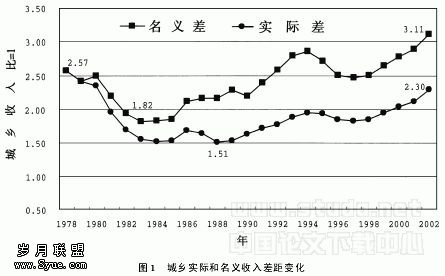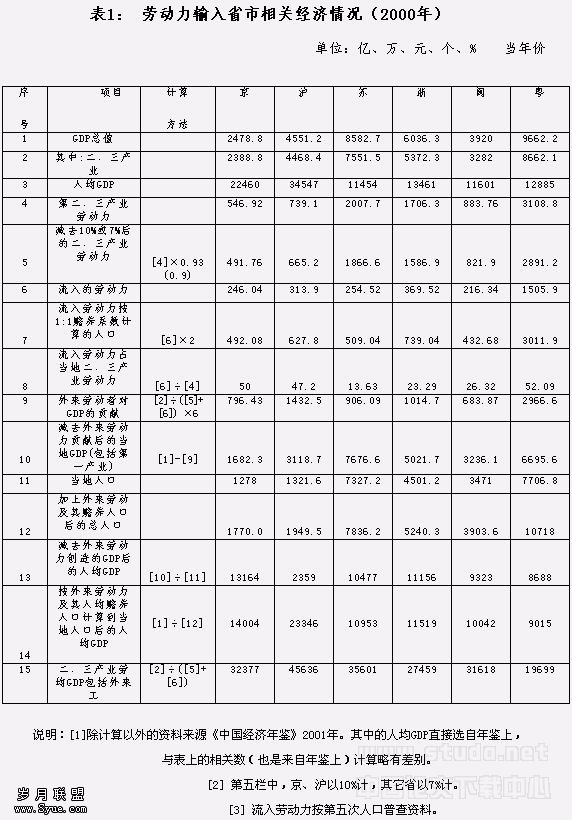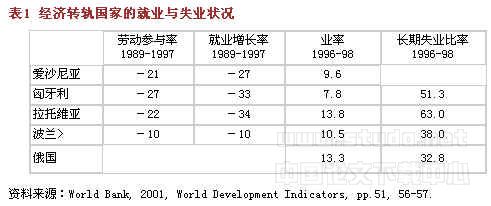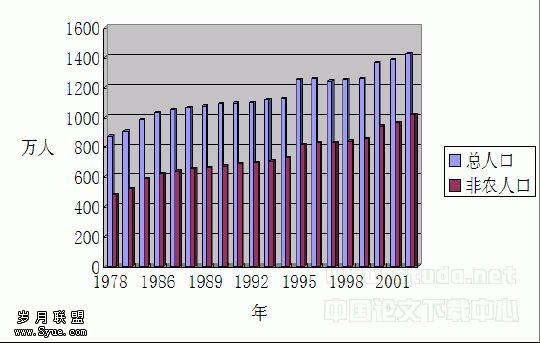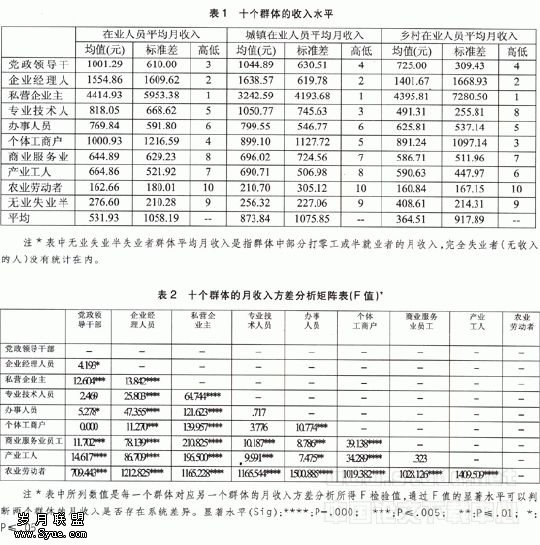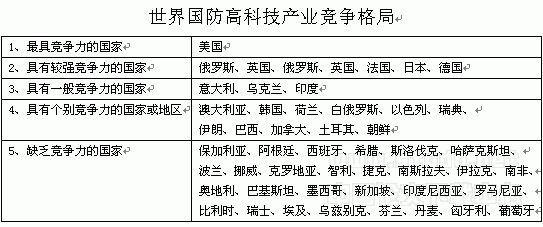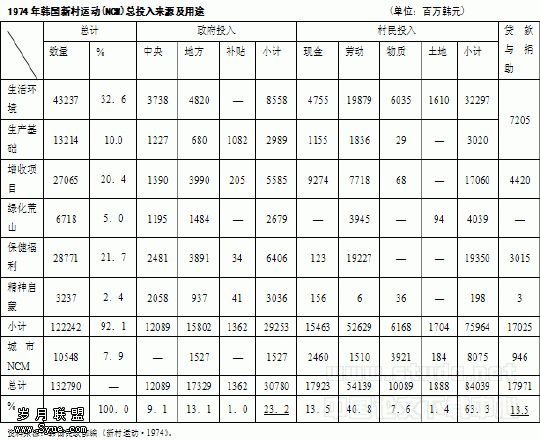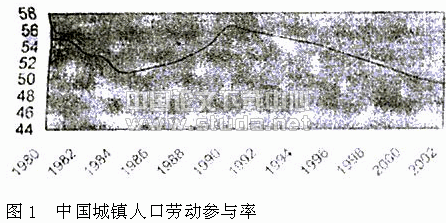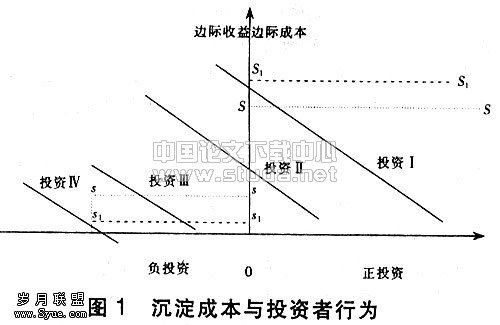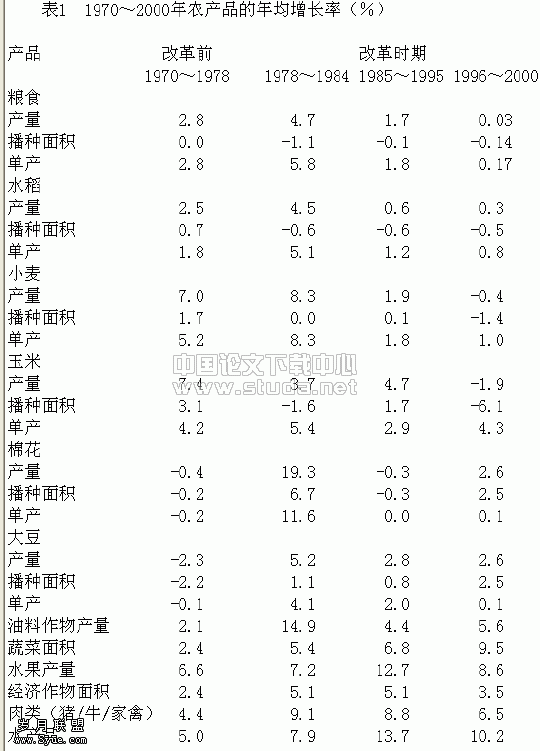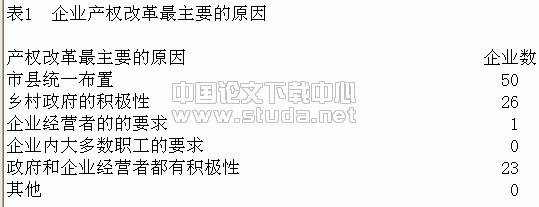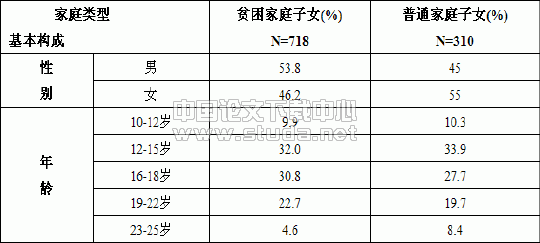世界经济史中的近世江南:比较与综合观察(6)
来源:岁月联盟
时间:2010-06-25
在我的书中我提出,在这里再次提出,豆饼肥料的应用首先是一种节省劳动的革新:这是一个还有其他人提出过的观点,既对于也对于日本(见下文)。黄对这一观点提出的反对意见包含了许多无根据的推理和其他错误。
首先,他认为粪肥“成为” (2002b, 507, 着重号是另加的;2002a, 154)主要肥料,超过了劳动密集度较低的绿肥,好像这是一个最近的;实际上,粪肥的优势开始的早得多,以完全不同的土地—劳动比率。在他自己指出粪肥的使用尤为耗费人力(154)之后,黄莫名其妙地要求避免得出17世纪末和18世纪豆饼的大量应用——在我们的时代是由粪肥向绿肥转变——代表了劳动力的大量节省的结论。(长江三角洲使用粪肥实际上在明末已达到了1930年代的水平[见Perkins 1969, 73],当时大范围使用豆饼只不过是刚刚开始,当时的人口数量——粪肥的一个主要来源——大概至多不过1930年代的一半。并且,像Perkins对猪只的出色论证[1969,71]一样,其他主要的肥料潜在来源可能也和人口增长保持同步或略微超过它。)
为了避免这一结论,黄首先提出,根据李伯重的旧作,这种新肥料没有增加产量:这是一个,如黄本人提到的(注viii),李已经放弃的观点。尽管黄把这说成是没有合适理由的可疑的立场颠倒(“李没有讨论他本人以前提供的证据” [2002a 154, n.4]),实际上李确实对此做了解释。他提到,他以前的著作依靠的事实是,增加“追肥”对提高早稻的产量作用相当小,但没有注意到追肥使中稻和晚稻的产量大幅度提高——而增加肥料用量实际上通常与其他这些水稻品种的推广联系在一起(1998, 47-48)。
然后黄指出(再次依赖李),在几百年的一个时期中,每磅肥料对水稻产量的效用出现了下降。这完全可能发生——就像它在其他很多时间和地点发生一样——尽管江南的证据不清(Ellis and Wang [1997, 185],例如,引用Dwight Perkins和赵冈较早的著作,提出从宋代到明末的长时期中,太湖地区水稻平均产量有一个缓慢但稳定的增长。同时,Ellis and Wang,他们自己就是土壤家,发现没有迹象表明肥力衰退,而这是黄推测可能开始出现的情况 [1997, 180]。)
然而,黄为这一观点提出的具体论据相当不可靠。他说,“三角洲地区的水稻产量历经明清两代增长微乎其微或根本没有提高,始终徘徊在1-3石” (2002a, 154)。这当然是一个很大的范围,并且告诉我们的只是三角洲的一些农田在一个很早的时期就取得了很高产量,同时其他农田花了很长时间才达到这一水平。但这恰好也是中世纪晚期和早期的欧洲发生的事:每英亩平均产量增长中的大部分,是来自大多数农田逐渐赶上一小部分农田在这一时期开始时已经达到的产量。(田块有很多细微的差异,在现代化学产生之前,从一块土地到另一块土地采用最好的方法可能极为缓慢,即使我们假定制度使这样做的动机最大化。)例如在英格兰,Robert Allen告诉我们,在中世纪的诺福克东北部,“常见的小麦产量是每英亩20蒲式耳”,尽管这个国家其他地方10蒲式耳的产量更为常见。500百年以后,他继续说,“1760年代的年轻者、1790-1815年农业报告集和1801年的收获利益都指出小麦产量为20-22蒲式耳” (Allen 1991, 239)。Overton给出了1801年英国不同的郡旁产量范围,其中最高的是每英亩24蒲式耳;他的全国平均值也是1901年每英亩22蒲式耳(1996, 77)。所以这个画面非常像黄对江南的描述,我们也完全可以精确地说,英国1300到1800年的产量徘徊在每英亩10到24蒲式耳之间,但这不会有多大帮助。
此外,在这一段中黄再次混淆了边际生产率与平均生产率。如果肥料的平均效用确实在随着时间衰减,那会是一个有趣的事实,但对一个要在某个具体时刻及时做出生产决策的农民来说,重要的问题是边际生产率:施更多的肥料将会怎样或不会怎样?在这里,相当清楚的是,农民肯定知道增加肥料会提高产量:否则我们就无法理解他们为什么不断地增加肥料,特别是昂贵的豆饼。实际上,如果使用豆饼没有可以预期的产量增长,由于豆饼相当贵,这只会加强我的观点,即,使用这种新肥料肯定有其他某种好处,例如节省劳动。(李也提到[1998, 48 - 49],引用一个当时的观察者,转用豆饼考虑到劳动的重大节约,并指出Thomas Smith对甚至对德川时代日本人口更为稠密的核心区使用豆饼抱有同样的观点。)当然,黄的话并没有否认这一点,即,使用一种其重量比效用相同的粪肥重量轻许多的新肥料,是对劳动的巨大节省。黄接下来评论了一番1930年代和1940年代用于购买肥料的贷款的高利率,而这与18世纪节省劳动的变革的争论几乎没有关系。他在这里的观点可能是,在任何一个时期引进的节省劳动的革新最终往往都要被劳动密集度提高的长期变化所压倒。但是如我们所见,在缺乏迅速的科技变革时那是完全正常的,并且无论如何都与我的基本观点无关,即,决定购买豆饼的农户在行动时,并不是像内卷化所预期的那样,好像他们有近于无限的极为廉价的家庭劳动供给可耗费。
黄然后转向批评李伯重对这场肥料革命的范围的估计。无论如何,这多少有点离题,因为我们关注的是这种肥料是否使应用它的地方产量增长,不是有多少土地得益于这些增长的产量。此外,看来黄没有注意到,即使李的最激进的观点不正确,豆饼肥料的影响仍然相当大。为了论证方便,让我们假定黄的观点正确,即他、李和我都接受的包世臣的10000000石的数字确实指的是通用石,而不是李认为这条资料所指的大得多的关东石(尽管李的解释看来完全符合Adachi Keiji对参与这种贸易的船只数量、载重量、它们每年来往次数的估计[1978],也符合其他资料[李 1998, 113 - 14, 209 b. 35],而黄引用的支持其观点的资料事实上与它矛盾。 )让我们进一步同意不是所有的输入都是大豆,也不是所有的大豆都制成了豆饼:为了论证方便,我规定只有2000000石豆饼肥料来自这种贸易。这仍然有352,000,000磅肥料,其养分等同于约115 – 175亿磅适当稀释的粪肥(Pan 1994, 36 - 37)。卜凯(1937, 258)估计一个成年男性个体每年产992磅粪便。江南的约31,000,000人口等于约24,000,000等成年人(Perkins 1969, 301),处于18,000,000到21,000,000个成年男性个体间,取决于一个人怎样估计男女之间食物摄入量的差异(Pomeranz 2000a, 39 n. 47涉及到这里的一些难点);他们约可提供190亿磅未稀释的粪肥,或者570亿磅稀释后的粪肥。因而,即使用这个相当谨慎的估计,从东北来的豆饼(没有计入另外从湖广的输入)也提供了大约相当于该地区所有人口产生的肥料总数的20-30%。如果,如同看起来更可能的,李用关东石衡量输入是正确的,它们的营养价值就相当于江南可用的人粪肥的50% - 75%,或许造成了后者的少许过剩,证明了(上文提到过的)明末粪肥的应用水平已经达到20世纪水平这一事实。
征引目录
阿贝尔(Abel, Wilhelm)1980. Agrarian Fluctuations in Europe from the Thirteenth to the Twentieth Centuries. New York:St. Martin’s Press.
足立啓二 (Adachi Keiji)1978:“大豆粕流通と清代の商業的農業”. 《東洋史研究》. 37(3):35—63.
艾伦(Allen, Robert C.)1989. “Enclosure, Farming Methods, and the Growth of Productivity in the South Midlands.” In Agrarian Organization in the Century of Industrialization:Europe, Russia and North America, edited by George Grantham and Carol Leonard. Greenwich, Conn.:JAI Press.
——. 1991. “The Two English Agricultural Revolutions, 1450—1800.” In Land, Labour and Livestock:Historical Studies in European Agricultural Productivity, edited by Bruce M. S. Campbell and Mark Overton. Manchester and New York:Manchester University Press.
——. 2000A. “Real Wages in Europe 1500—1914.” 可在下面地址见到:http://www.economics.ox.ac.uk/Members/robert.allen/WagesFiles/wagesnew2.pdf.
——. 2000B. “Economic Structure and Agricultural Productivity in europe, 1300—1800,” European Review of Economic History 3:11—25.
——. 2001. “Real Wages in Europe and Asia:A First Look at the Long—Term Patterns.” Unpublished manuscript.
——. 2002. “Involution, Revolution, or What? Agricultural Productivity, Income, and Chinese Economic Development.” Paper delivered at meeting of All—UC Group in Economic History on “Convergence and Divergence in Historical Perspective,” Irvine, CA November 8—10, 2002. 可在下面地址见到: http://aghistory.ucdavis.edu/allen.pdf.
安布罗索利(Ambrosoli, Mauro)1997. The Wild and the Sown. Cambridge:Cambridge University Press.
贝洛克(Bairoch, Paul)1975. “The Main Trends in National Economic Disparities Since the Industrial Revolution.” In Disparities in Economic Development Since the Industrial Revolution, edited by Paul Bairoch and Maurice Levy—Leboyer. New York:St. Martin’s Press.
贝尔(Bell, Lynda S. )1999. One Industry, Two Chinas:Silk Filatures and Peasant—Family Production in Wuxi County, 1865—1937. Stanford:Stanford University Press.
布罗代尔(Braudel, Fernand) 1981. The Structures of Everyday Life, translated by Sian Reynolds. New York:Harper and Row.
白馥兰(Bray, Francesca)1986. The Rice Economies:Technology and Development in Asian Societies. Berkeley:University of California Press.
卜凯(Buck, John L) 1930.Chinese Farm Economy. Chicago:University of Chicago Press.
——.1964 [1937a]. Land Utilization in China. New York:Paragon Book Reprint Corp. (中译本《土地利用》——译注)
——. 1937b. Land Utilization in China:Statistics. Shanghai:University of Nanjing. (中译本《中国土地利用:统计资料》——译注)
曹树基,2000.《中国人口史》 卷 5 ,上海:复旦大学出版社。
克拉克(Clark, Gregory)1991. “Yields Per Acre in English Agriculture:1250—1860:Evidence from Labour Inputs.” Economic History Review 44(3):445—60.
克拉克、休伯曼和林德尔特(Clark, Gregory, Michael Huberman, and Peter Lindert)1995. “A British Food Puzzle, 1770—1850,” Economic History Review 48:2, 215—237.
库珀(Cooper, J. P.)J. P. 1985. “In Search of Agrarian Capitalism.” In The Brenner Debate, edited by T. H. Aston and C. H. Philpin. Cambridge:Cambridge University Press.
克拉夫茨(Crafts, N. F. R.) 1977. “Industrial Revolution in England and France:Some Thoughts on the Question, Why was England First?” Economic History Review 30:429—41.
——. 1985. British Economic Growth During the Industrial Revolution. Oxford:Oxford University Press.
德夫里斯(De Vrise, Jan) 1993. “Between Consumption and the World of Goods.” In Consumption and the World of Goods, edited by John Brewer and Roy Porter. London:Routledge.
——. 1994. “The Industrious Revolution and the Industrial Revolution.” Journal of Economic History 54(2):249—70.
——. 2001. “The Industrious Revolution in East and West.” Paper presented at workshop on Labour—Intensive Industrialization in Global History:Asian Experiences and Comparative Perspectives. Osaka. December.
——.和冯·德沃德(and Ad. Van der Woude) 1997. The First Modern Economy:Success, Failure and Perseverance of the Dutch Economy, 1500—1815. Cambridge:Cambridge University Press.
德鲁蒙德和威尔布里厄姆(Drummond, J.C., and Anne Wilbraham) 1939. The Englishman’s Food:A History of Five Centuries of English Diet. London:Jonathan Cape.
——. 1958 The Englishman’s Food:A History of Five Centuries of English Diet. Revised edition. London:Jonathan Cape.
埃利斯和王(Ellis, E. C., and S. M. Wang) 1997. “Sustainable Traditional Agriculture in the Tai Lake Region of China.” Agriculture, Ecosystems and Environment 61:177—93.
伊懋可(Elvin, Mark)1998. “The Environmental Legacy of Imperial China.” China Quarterly 156:733—56.
——. 1999. “Blood and Statistics:Reconstructing the Population Dynamics of Late Imperial China from the Biographies of Virtuous Women in Local Gazetteers.” In Chinese Women in the Imperial Past, edited by Harriet Zurndorfer. Leiden:E. J. Brill.
方行,1987. “论清代前期棉纺织的社会分工” ,《中国史研究》 2(1):79—94.
——. 1996. “清代江南农民的消费”, 《中国经济史研究》 11(3):91—98.
费孝通, 1962 [1939]. Peasant Life in China:A Field Study of Country Life in the Yangtze Valley. New York:Dutton.
福格尔(Fogel, Robert) 1992. “Second Thoughts on the European Escape from Hunger,” in S.R. Osmani, ed., Nutrition and Poverty. Oxford:Clarendon Press.
弗兰克(Francks, Penelope). 2002. “Rural Industry, Growth Linkages, and Economic Development in Nineteenth Century Japan.” Journal of Asian Studies 61(1):33—55.
格尔茨(Geertz, Clifford)1963. Agricultural Involution:The Process of Ecological Change in Indonesia. Berkeley and Los Angeles:University of California Press.
格兰瑟姆(Grantham, George)1989a. “Agrarian Organization in the Century of Industrialization:Europe, Russia, and North America.” In Agrarian Organization in the Century of Industrialization:Europe Russia and North America, edited by George Grantham and Carol Leonard. Greenwich, Conn.:JAI Press.
——. 1989b. “ Agricultural Supply During the Industrial Revolution:French Evidence and European Implications.” Journal of Economic History 49(1):43—72.
——. 1993. “Divisions of Labour:Agricultural Productivity and Occupational Specialization in Pre—Industrial France.” Economic History Review 46(3):478—502.
格林伯格(Greenburg, Michael)1951. British Trade and the Opening of China. Oxford:Oxford University Press.
郭松义,1994. “清代粮食市场和商品粮数量的估测”, 中国史研究64(4):40—49.
格思里(Guthrie, Helen)1995. Human Nutrition. St. Louis:Mosby.
汉密尔顿(Hamilton, Earl)1998. “Commercial Organization and the Rise of China’s Market Economy:A Comparative and Historical Analysis.” Paper presented at conference on the Rise of East Asia:500, 150, and 50 Year Perspectives.” Chinese University of Hong Kong. June.
汉利(Hanley,Susan)和Kozo Yamamura. 1977. Economic and Demographic Change in Pre—Industrial Japan, 1600—1868. Princeton:Princeton University Press.
速水融(Hayami Akira)1986. “A Great Transformation:Social and Economic Change in Sixteenth and Seventeenth Century Japan.” Bonner Zeitschrift fü;r Japanologie (Bonn journal for Japanese studies) 8:3—13.
何炳棣(Ho,Ping—ti) 1959. Studies on the Population of China, 1368—1953. Cambridge:Harvard University Press.
霍(Ho, Samuel P. S) 1986. “Off—farm Employment and Farm Households in Taiwan.” In Off—Farm Enployment in the Development of Rural Asia, edited by R. T. Shand. Canberra:Australian National University National Center for Development Studies.
——. 1994. Rural China in Transition. Oxford:Clarendon Press.
——. 1995. “Rural Non—agricultural Development in Post—Reform China:Growth, Development Patterns, and Issues.” Pacific Affairs 68(3):360—91.
霍布斯鲍恩(Hobsbawm, Eric)1975. Industry and Empire. London:Penguin.
霍夫曼(Hoffman, Philip) Growth in a Traditional Society:The French Countryside, 1450—1815. Princeton:Princeton University Press.
霍夫曼、杰克斯莱文和林德尔特(Hoffman, Philip T., David S. Jacks, Patricia A.Levin, and Peter H.Lindert). 2002 . “Prices and Real Inequality in Europe since 1500.” Journal of Economic History 62:2 (June):322—354.
霍尔德内斯(Holderness, B. A). 1989. “Prices, Productivity and Output,” in G.E. Mingay, ed., The Agrarian History of England and Wales Volume VI 1750—1850 (Cambridge:Cambridge University Press), pp. 84—189.
霍尼布鲁克(Hornibrook, Jeff) “Local Elites and Mechanized Mining in China:The Case of the Wen Lineage in Pingxiang County, Jiangxi.” Modern China 27(2):202—28.
黄宗智(Huang, Philip C. C)1985. The Peasant Economy and Social Change in North China. Stanford:Stanford University Press. (中译本《华北的小农经济与社会变迁》)
——. 1990. The Peasant Family and Rural Development in the Yangzi Delta, 1350—1988. Stanford:Stanford University Press. (中译本《长江三角洲小农家庭与》)
——. 1996. Civil Justice in China:Representation and Practice in the Qing. Stanford:Stanford University Press.(中译本《民事审判与民间调解:清代的表达与实践》——译注)
——. 2002a. “发展还是内卷? 十八世纪英国与中国——评彭慕兰《大分岔:欧洲,中国及世界经济的发展》 《研究》 149—176.
——. 2002b. “Development or Involution in Eighteenth Century Britain and China?” Journal of Asian Studies 61:2 (May), 501—538.
——. 2003. “Further Thoughts on Eighteenth—Century Britain and China:Rejoinder to Pomeranz’s Response to My Critique.” Journal of Asian Studies 62:1 (February).
雅各布(Jacob, Margaret)1988. The Cultural Meaning of the Scientific Revolution. New York:Alfred A. Knopf.
姜皋 [1834] 1963. 《浦泖农咨》,上海:上海图书馆。
琼斯(Jones, Eric L) 1981a. “Agriculture 1700—1800.” In The Economic History of Britain Since 1700 Volume I:1700—1800, edited by R.C. Floud and D. N. McCloskey. Cambridge:Cambridge University Press.
——. 1981b. The European Miracle:Environments, Economies, and Geopolitics in the Histories of Europe and Asia. Cambridge:Cambridge University Press.
岸本美緖(Kishimoto Mio)1997:《淸代中国の物価と経済変動》東京 :硏文出版.
克劳斯(Kraus, Richard)1968. “Cotton and Cotton Goods in China, 1918—1936:The Impact of Modernization on the Traditional Sector.” Ph.D. diss. Harvard University.
克里特、梅迪克和施卢伯姆(Kriedte, Peter, Hans Medick and Jürgen Schlumbohm)Industrialization Before Industrialization, translated by Beate Schempp. Cambridge:Cambridge University Press.
赖其广(音译)和汉密尔顿(Lai Chi—kong, and Gary Hamilton). 1986. “近世中国商标与全国都市市场”, Proceedings of the Conference on Regional Studies of Modern China. Taibei:Institute of Modern History, Academia Sinica.
李中清、王丰和康文林(Lee James, Wang Feng, and Cameron Campbell) 2002. “Positive Check or Chinese Checks?” Journal of Asian Studies 61(2):591—607.
莱文(Levine, David)1977. Family Formation in an Age of Nascent Capitalism. New York:Academic Press.
——. 1985. “Industrialization and the Proletarian Family in England.” Past and Present 107 (May):168—203.
李伯重, 1994. “控制增长,以保富裕:清代前中期江南的人口行为”,《新史学》5:(3)25—71。
—— .1998. Agricultural Development in Jiangnan, 1620—1850. New York:St. Martin’s Press.
——. 2000. 《江南的早期化》北京:社会文献出版社。
林德尔特和威廉森(Lindert, Peter and Jeffrey Williamson)1982. “Revising England’s Social Tables 1688—1812.” Explorations in Economic History 19:4 (October), 385—408.
卢汉超1992. “Arrested Development:Cotton and Cotton Markets in Shanghai, 1350—1843.” Modern China 18(4):468—99.
马德斌(音译Ma Debin). “Modern Economic Growth in the Lower Yangzi:a Quantitative and Historical Perspective.” Paper presented at meeting of the All—UC Economic History Group on “Convergence and Divergence in Historical Perspective:the Origins of Wealth and the Persistence of Poverty in the Modern World.” Irvine, CA, November 8—10, 2002.
麦克劳德(MacLeod, Christine)1988. Inventing the Industrial Revolution:The English Patent System, 1660—1800. New York:Cambridge University Press.
麦迪逊(Maddison, Angus) 1995. Monitoring the World Economy, 1820—1992. Washington, D.C.:OECD (Organization for Economic Cooperation and Development) Publications and Information Center.
——. 1998. Chinese Economic Performance in the Long Run. Paris:OECD (Organization for Economic Cooperation and Development) Development Center.
马克斯(Marks, Robert)1991. “Rice Prices, Food Supply, and Market Structure in eighteenth Century China.” Late Imperial China 12(2):64—116.
——. 1997. Tigers, Rice, Silk, and Silt:Environment and Economy in Guangdong, 1250—1850. Cambridge:Cambridge University Press.
马宗达(Mazumdar,Sucheta ) 1998. Sugar and Society in China:Peasants, Technology, and the World Market. Cambridge:Harvard University Press.
莫基尔(Mokyr, Joel) 1976. Industrialization in the Low Countries, 1795—1850. New Haven:Yale University Press.
——. 1988. “Is There Life in the Pessimist Case? Consumption during the Industrial Revolution, 1790—1850.” Journal of Economic History 48(1):69—92.
莫尔斯(Morse H. B. )1966. The Chronicles of the East India Company Trading to China, 1635—1834. Oxford:Oxford University Press.
满铁,上海事务所1941. 《江苏省无锡县农村实态调查报告书》
马若孟(Myers, Ramon) 1991. “How did the Modern Chinese Economy Develop? A Review Article.” Journal of Asian Studies 50 (3):604—28.
纳坎(Naquin, Susan )2000. Peking:Temples and City Life. Berkeley and Los Angeles:University of California Press.
西川俊作(Nishikawa, Shunsaku)1986. “Grain Consumption:The Case of Choshu.” In Japan in Transition, edited by Marius Jansen and Gilbert Rozman. Princeton:Princeton University Press.
奥布赖恩和凯德(O’Brien, Patrick and Caglar Keydar)1978. Economic Growth in Britain and France, 1780—1914. London:George Allen and Unwin.
奥迪(Oddy, D. J). 1990. “Food, Drink, and Nutrition.” In The Cambridge Social History of Britain, 1750—1950, vol. 2, edited by F. M. L. Thompson. New York:Cambridge University Press.
奥格尔维和塞尔曼(Ogilvie, Sheilagh and Markus Cerman) 1996. “Introduction:the Theories of Proto—Industrialization.” In European Proto—Industrialization, edited by Sheilagh Ogilvie and Markus Cerman. Cambridge:Cambridge University Press.
Oshima, Harry. 1986. “The Transition from an Agricultural to an Industrial Economy in East Asia.” Economic Development and Cultural Change 34:783—809.
马克·欧维顿(Overton, Mark). 1996. Agricultural Revolution in England:The Transformation of the Agrarian Economy 1500—1850. Cambridge:Cambridge University Press.
潘敏德 1994. “Rural Credit Market and the Peasant Economy (1600—1949) :The State, Elite, Peasant, and ‘Usury.’” Ph. D. diss. University of California, Irvine.
帕克,戴维和克鲁特(Parker, David, and Patricia Croot) 1985. “Agrarian Class Structure and the Development of Capitalism:France and England Compared.” In The Brenner Debate:Agrarian Class Structure and Economic Development in Pre—Industrial Europe, edited by T. H. Aston and C. H. E. Philpin. Cambridge:Cambridge University Press.
帕塔萨拉蒂(Parthassarathi, Prasannan)1998. “Rethinking Wages and Competitiveness in the Eighteenth Century:Britain and South India.” Past and Present 158:79—109.
珀金斯(Perkins, Dwight H. )1969. Agricultural Development in China 1368—1968. Chicago:Aldine Publishing. (中译本《中国农业的发展》——译注)
彭慕兰(Pomeranz, Kenneth)2000a. The Great Divergence:China, Europe, and the Making of the Modern World Economy. Princeton:Princeton University Press.
——. 2000b. “Re—thinking the Late Imperial Chinese Economy:Development, Disaggregation and Decline, circa 1730—1930.” Itinerario 24(3/4):29—74.
——. Forthcoming. “Standards of Living in Eighteenth—Century China:Regional Differences, Temporal Trends, and Incomplete Evidence.” In New Evidence of the Standard of Living in Pre—Industrial Europe and Asia, edited by Robert Allen, Tommy Bengtsson, and Martin Dribe. Oxford:Oxford University Press.
波斯奈尔—维奈(Postel—Vinay, Giles)1994. “The Dis—Integration of Traditional Labour Markets in France:From Agriculture and Industry to Agriculture or Industry.” In Labour Market Evolution, edited by George Grantham and Mary MacKinnon. London:Routledge.
罗威廉(Rowe, William T.)2001. “Review of The Great Divergence.” International History Review 23(2):408—10.
扎贝尔和蔡特林(Sabel, Charles, and Jonathan Zeitlin) 1985. “Historical Alternatives to Mass Production:Politics, Markets, and Technology in Nineteenth—Century Industrialization,” Past and Present 108:133—76.
——, eds. 1997. World of Possibilities:Flexibility and Mass Production in Western Industrialization . Cambridge:Cambridge University Press.
斋藤修(Saito Osamu)1985. 《プロト工業化の時代 :西欧と日本の比較史》東京 :日本評論社。
谢(Shih, James) 1992. Chinese Rural Society in Transition:A Case Study of the Lake Tai Area, 1368—1800. Berkeley:Institute of East Asian Studies.
施坚雅(Skinner, G. William )1987. “Sichuan’s Population in the Nineteenth Century:Lessons from Disaggregated Data.” Late Imperial China 8(1):1—79.
史密斯(Smith, Thomas C.)1959. The Agrarian Origins of Modern Japan. Stanford:Stanford University Press.
苏成捷(Sommer, Matthew) 2000. Sex, Law, and Society in Late Imperial China. Stanford:Stanford University Press.
杉原薫(Sugihara, Kaoru)1996. “The European Miracle and the East Asian Miracle:Towards a New Global Economic History.” Sangyō to Keizai (Business and Economy) 11(2):27—48.
——. 2000. “The East Asian Path of Economic Development:A Long—Term Perspective,” Discussion Paper 00—17, Graduate School of Economics and Osaka School of International Public Policy. Osaka University.
孙敬之(Sun Jingzhi)1988. Economic Geography of China. New York:Oxford University Press.(中文本《地理概论》——译注)
托马斯(Thomas, Brinley)1985. “Escaping From Constraints:the Industrial Revolution in a Malthusian Context.” Journal of Interdisciplinary History 15(4):729—53.
汤普森(Thompson, F. M. L. ) 1968. “The Second Agricultural Revolution, 1815—1880.” Economic History Review 21(1):62—77.
特里瓦撒(Trewartha, Glenn) T. 1965. Japan:A Geography. Madison and Milwaukee:University of Wisconsin Press.
福特(Voth, Hans—Joachim) 1998. “Time and Work in Eighteenth—Century London,” Journal of Economic History 58(1):29—58.
——. 2000. Time and Work in England 1750—1830. Oxford:Clarendon Press.
王业键(Wang, Yeh—chien) 1989. “Food Supply and Grain Prices in the Yangtze Delta in the Eighteenth Century.” In The Second Conference on Modern Chinese History, Taibei:Academia Sinica 2:423—62.
魏丕信和王国斌(Will, Pierre—Etienne and R. Bin Wong)1991. Nourish the People:The State Civilian Granary System in China, 1650—1850. Ann Arbor:University of Michigan Press.
温特(Winter, James) 1999. Secure From Rash Assault:Sustaining the Victorian Environment. Berkeley and Los Angeles:University of California Press.
王国斌 (Wong, R. Bin) 1990. “The Development of China’s Peasant Economy:A New Formulation of an Old Problem.” Peasant Studies 18(1):5—26.
——. 1992. “Chinese Economic History and Development:A Note on the Myers—Huang Exchange.” Journal of Asian Studies 51(3):600—12.
——. 1997. China Transformed:Historical Change and the Limits of European Experience. Ithaca:Cornell University Press.
赖特(Wright, Timothy). 1984. Coal Mining in China’s Economy and Society, 1895—1937. Cambridge:Cambridge University Press.
里格利(Wrigley, E. A.)1988. Continuity, Chance, and Change:The Character of the Industrial Revolution in England. Cambridge:Cambridge University Press.
许涤新和吴承明 1985:《中国资本主义的萌芽》.北京:人民出版社。
——. 2000. Chinese Capitalism 1522—1840. New York:St. Martin’s.
许檀1998. 《明清时期山东商业经济的》 北京:中国社会出版社。
徐新吾主编 1992:《江南土布史》,上海:上海社会科学院出版社。
余明侠 1991:《徐州煤矿史》南京:江苏古籍出版社。
张丽(音译Zhang, Li) 2002. “Peasant Household Economy under the Influence of International Trade, Industrialization, and Urbanization:A Case Study of Wuxi Peasants’ Response to Economic Opportunities, 1860s—1940s.” Ph.D. diss. University of California, Los Angeles
张忠民 1988:《上海从开发到开放,1369—1843》昆明:云南人民出版社。
中央气象局气象科学研究院1981.《中国近五百年旱涝分布图集》北京:地图出版社。
